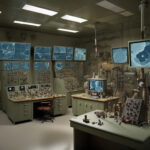AI Impact on Employment: Shifting Occupational Mix Indicates Limited Disruption
Artificial Intelligence (AI) has been a hot topic in recent years, with many fearing that its advancement will lead to widespread job losses. However, recent studies have shown that the impact of AI on employment is still relatively limited. In fact, the occupational mix is shifting only slightly faster than in past periods of technological change.
While it is true that AI has the potential to automate certain tasks and jobs, the overall effect on employment has been more nuanced than initially predicted. The fear of mass unemployment due to AI has not materialized as quickly as some experts had forecasted. Instead, what we are seeing is a gradual shift in the types of jobs available, rather than a wholesale replacement of human workers with machines.
One reason for this limited impact is that AI is still in the relatively early stages of development. While AI technologies have advanced rapidly in recent years, they are still far from being able to perform complex, nuanced tasks that require human judgment and creativity. As a result, many jobs that involve these types of skills are unlikely to be automated in the near future.
Another factor contributing to the limited impact of AI on employment is the adaptability of the workforce. Historically, technological advancements have led to the creation of new jobs and industries that were previously unimaginable. The same is true for AI – as some jobs become automated, new opportunities arise in fields such as data science, machine learning, and AI research.
Furthermore, many companies are finding that a hybrid approach, combining AI technologies with human workers, is often the most effective way to increase productivity and efficiency. Rather than replacing human workers entirely, AI is being used to augment their skills and capabilities, allowing them to focus on more high-level tasks that require human intervention.
For example, in the healthcare industry, AI is being used to analyze medical images and assist doctors in making diagnoses. While AI can perform certain tasks faster and more accurately than humans, it is not able to replace the expertise and empathy that a human doctor brings to patient care. By working together, AI and human workers can provide a higher level of care than either could alone.
Overall, while the impact of AI on employment is not as dire as some had predicted, it is still important for policymakers, businesses, and workers to prepare for the changes that are on the horizon. This means investing in education and training programs to help workers develop the skills they need to succeed in an increasingly automated world. It also means rethinking traditional job roles and structures to ensure that humans and AI can work together effectively.
In conclusion, the impact of AI on employment is still limited, with the occupational mix shifting only slightly faster than in past periods of technological change. By embracing this shift and preparing for the future, we can ensure that AI enhances, rather than replaces, the human workforce.
AI, Employment, Impact, Occupational Mix, Technology Evolution












